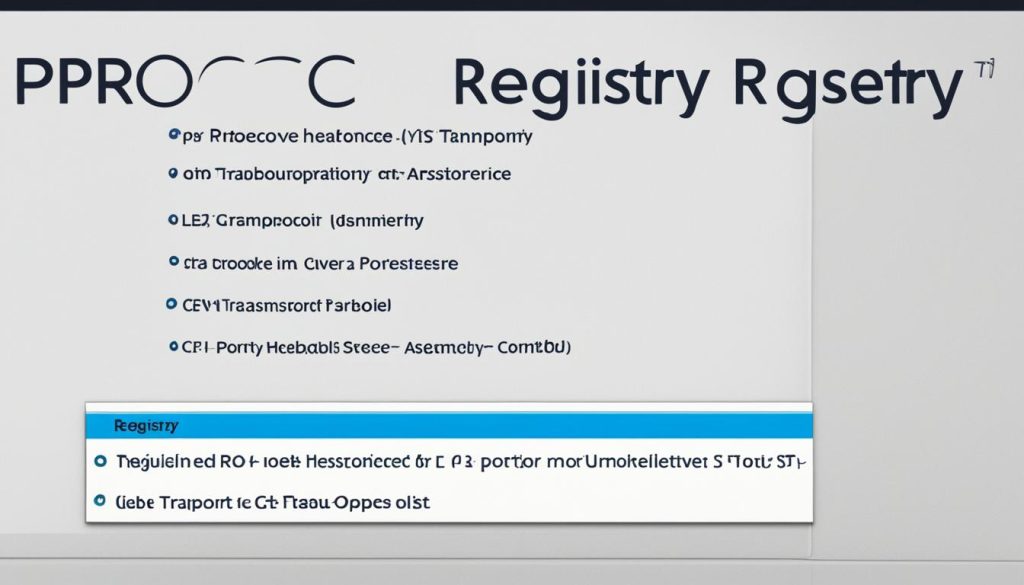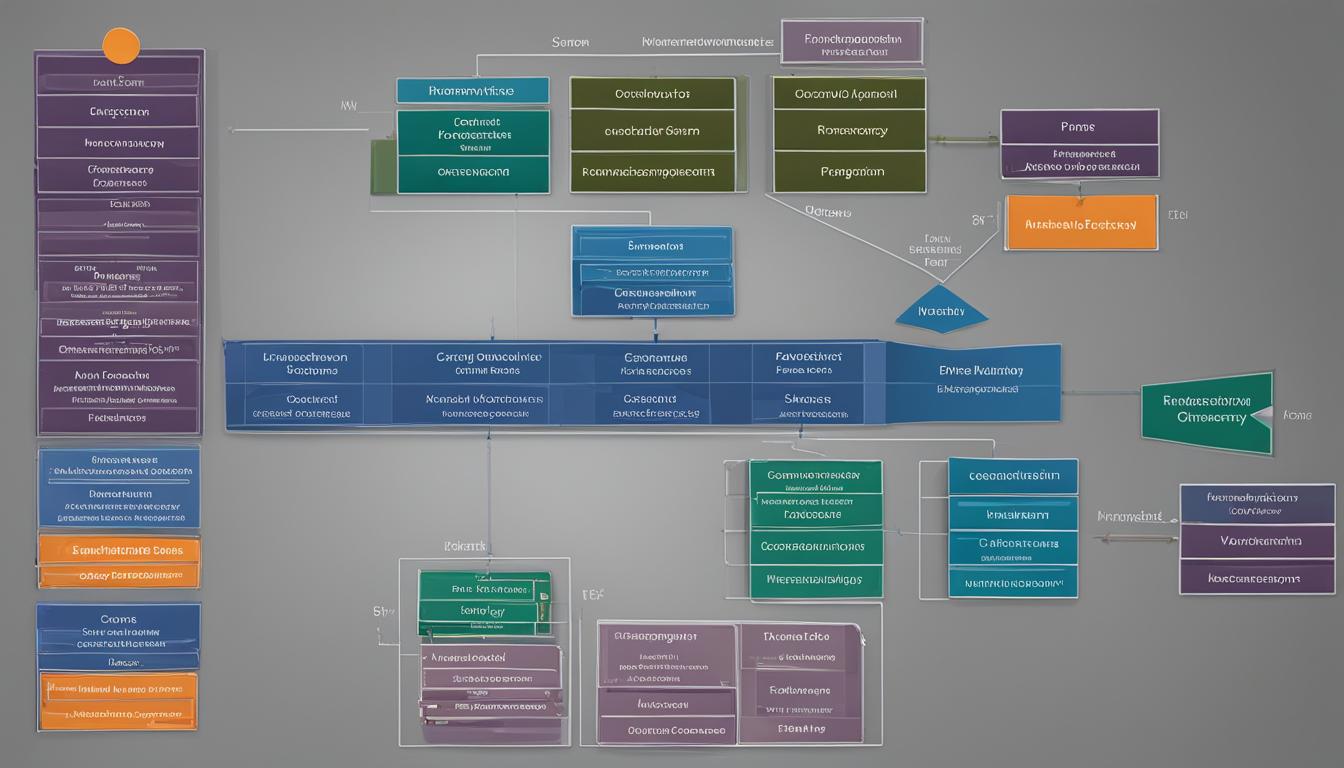Service Name and Transport Protocol Port Number Registry
Did you know that there are over 65,000 TCP and UDP port numbers in use today? These port numbers play a crucial role in facilitating communication between devices and applications on the internet. However, to keep this vast network infrastructure running smoothly, there needs to be a centralized reference that assigns and manages these port numbers.
Enter the Service Name and Transport Protocol Port Number Registry, maintained by the Internet Assigned Numbers Authority (IANA). This comprehensive registry serves as a vital resource for network administrators and developers, providing a standardized reference for TCP and UDP port numbers, along with their associated service names and protocol assignments.
Key Takeaways:
- The Service Name and Transport Protocol Port Number Registry is maintained by the Internet Assigned Numbers Authority (IANA).
- It includes a comprehensive list of TCP and UDP port numbers, service names, and protocol assignments.
- The registry ensures proper communication and data exchange across networked systems.
- TCP and UDP port numbers in the range of 0 to 1023 are known as well-known or system ports.
- The registry is a valuable resource for network administrators and developers configuring and managing network services.
Understanding TCP and UDP Port Numbers
TCP (Transmission Control Protocol) and UDP (User Datagram Protocol) are the two primary transport protocols used in computer networking. These protocols play a crucial role in facilitating communication and data transfer between devices on a network.
Each TCP or UDP communication channel is identified by a port number. Port numbers act as unique identifiers for different network services or applications. When data is sent over a network, it is divided into small units called packets. These packets are then assigned a port number to ensure they reach the intended service or application.
Port numbers are divided into three ranges: well-known ports, registered ports, and dynamic or private ports. Well-known ports range from 0 to 1023 and are commonly assigned to widely-used network services such as HTTP (port 80) and HTTPS (port 443). Registered ports range from 1024 to 49151 and are assigned to specific applications or services by the Internet Assigned Numbers Authority (IANA). Dynamic or private ports range from 49152 to 65535 and are typically used for temporary connections.
IANA, via its Service Name and Transport Protocol Port Number Registry, maintains a comprehensive list of well-known and registered port numbers along with their corresponding service names and protocol assignments. This registry serves as a valuable resource for network administrators and developers, providing them with the necessary information to configure and manage network services.
To illustrate the use of port numbers, consider the example of a web browser. When you enter a website’s URL in your browser, your computer initiates a TCP connection to the web server using port 80 for the HTTP protocol. This allows your browser to receive the requested web page and display it on your screen.
The Role of IANA Service Names in Port Number Assignment
The Internet Assigned Numbers Authority (IANA) plays a crucial role in assigning port numbers and protocol assignments for network services. One of the key components of this assignment process is the use of standardized service names. These service names are associated with specific network protocols and provide a standardized way of identifying and configuring network services.
The IANA maintains the Service Name and Transport Protocol Port Number Registry, which includes a comprehensive list of IANA service names, along with their corresponding port numbers and protocol assignments. This registry serves as a centralized reference for network administrators and developers to ensure consistency and compatibility across different network systems.
By using the standardized service names provided by the IANA, network administrators can easily identify and configure the appropriate port numbers for specific protocols and services. This simplifies the process of setting up and managing network services, ensuring seamless communication and data exchange between devices and applications.

The Importance of the Protocol Registry
The protocol registry in the Service Name and Transport Protocol Port Number Registry plays a crucial role in defining and categorizing network protocols. It ensures effective communication between network services and applications by mapping TCP and UDP port numbers to specific protocols.
By referring to the protocol registry, network administrators and developers can ensure correct system configuration and the utilization of appropriate protocols for specific services. This ensures seamless data exchange and compatibility across network systems.
Without the protocol registry, it would be challenging to establish standardized protocols and port numbers, leading to potential communication errors and inefficiencies. The protocol registry in the Service Name and Transport Protocol Port Number Registry provides a centralized reference for efficient and reliable network communication.

Benefits of the Protocol Registry:
- Standardized protocol mapping for TCP and UDP port numbers
- Ensures compatibility and interoperability across network systems
- Simplifies system configuration for network administrators and developers
- Facilitates efficient communication between network services and applications
Navigating the Service Registry
The Service Name and Transport Protocol Port Number Registry includes a service registry that serves as a valuable resource for network administrators and developers. This registry provides a comprehensive list of IANA service names and their associated TCP and UDP port numbers. It simplifies the process of configuring and managing network services by allowing users to easily identify the appropriate port numbers and service names for specific applications or protocols.
By referring to the service registry, network administrators can ensure smooth communication between systems. They can quickly find the necessary information to configure network services accurately. With the comprehensive list of IANA service names and their corresponding TCP and UDP port numbers, developers can avoid compatibility issues and streamline the setup of network services.
The service registry allows for efficient navigation and precise identification of IANA service names, TCP port numbers, and UDP port numbers. By having this centralized reference, network administrators and developers can make informed decisions when configuring their network services, facilitating seamless communication and optimal system performance.
The Role of the Port Registry in Network Protocols
The port registry within the Service Name and Transport Protocol Port Number Registry plays a vital role in network protocols by providing a central repository for TCP and UDP port numbers assigned by the Internet Assigned Numbers Authority (IANA). This registry serves as a standardized reference for network administrators and developers, enabling them to easily identify and configure port numbers for specific protocols and services.
By consulting the port registry, network administrators gain the ability to ensure consistent and compatible port assignments across different network systems. This consistency is essential for seamless communication and data exchange between devices and applications. With the port registry’s accurate and up-to-date information, administrators can effectively manage and configure network protocols, promoting efficient and reliable network communication.
Furthermore, the port registry works hand in hand with the service registry within the Service Name and Transport Protocol Port Number Registry. By referencing both registries, network administrators can confidently set up and manage network services, TCP port numbers, and UDP port numbers. These comprehensive registries eliminate the guesswork associated with port assignments, enabling administrators to allocate the right ports to the appropriate services, fostering optimal network functionality.
FAQ
What is the Service Name and Transport Protocol Port Number Registry?
Why is the Service Name and Transport Protocol Port Number Registry important?
What are TCP and UDP port numbers?
What information does the Service Name and Transport Protocol Port Number Registry provide?
What are IANA service names and how do they relate to port numbers?
What is the role of the protocol registry in the Service Name and Transport Protocol Port Number Registry?
How can the service registry in the Service Name and Transport Protocol Port Number Registry be useful?
What is the role of the port registry in the Service Name and Transport Protocol Port Number Registry?
- How Strategic SEO Drove Growth for a CPAP E-commerce Brand - July 24, 2025
- Top 3 SEO Companies in Toronto: An Analytical Comparison - July 23, 2025
- SEO for Entry Door Services - April 24, 2025





















Post Comment
You must be logged in to post a comment.